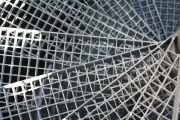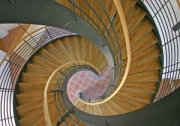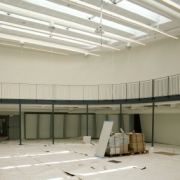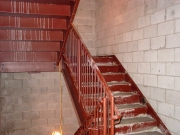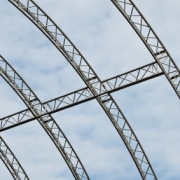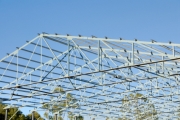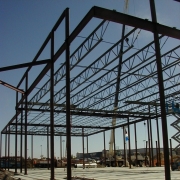- Error
{Re}habitat
Learn how adaptive reuse and upcycling can add hip design to your home, apartment, or yard with the Go Green channel's {Re}habitat series. Follow host Rachael Ranney as she shows you how to repurpose salvaged and found materials, adding fun and function to your space without breaking your budget.

This topic includes information related to metal gratings installed during construction. Metal gratings are floors with repetitive, open spaces. Metal gratings have a bar or plank design that is commonly made from steel or aluminum materials. Metal gratings are welded, forged or riveted.
Metal railing systems are a typical feature of design elements such as stairs, ramps, drop-offs and uneven walkways. Metal railings utilize the same basic structural components as wood railings: a top handrail; a bottom rail or track; balusters or newel posts for main load transfer to the walking surface; and infill panels, pickets or spindles. While the design of railing systems must meet stringent code requirements for safety and structural support, metal railing systems offer a broad range of design options from a basic picket rail to an industrial wire mesh panel to custom artistic designs. The structural capacity, durability, and ease of fabrication of metal railing systems provide some advantage over wood railings, but they are generally more expensive.
This topic includes information related to catwalks installed during construction. Catwalks are narrow elevated walkways with railings and handrails, which allow building personnel to reach difficult locations or pedestrians to cross difficult terrain. Catwalks are commonly located in theaters, above stages, between portions of a building, along the side of large industrial tanks and as part of pedestrian bridges.
Metal stairs are an important component of most multi-story buildings and provide a variety of design options. Typical design configurations are straight run, L-shaped, and switch-back. Spiral stair systems fabricated from metal components are also common and offer many design options. A metal stair system can be designed as a multi-story self-supporting structural unit, independent of the building structure, or as a single flight of stairs that is structurally supported at each floor or landing. One of the biggest benefits of a self-supporting stair system is that it can be installed independently of the floor structure. More commonly, stair systems are designed in single flight segments and require structural support through a connection to a floor structure or vertical columns. Metal stair systems are fabricated at a metal shop or facility based on job-specific shop drawings and are delivered to the site in segments to facilitate erection.
This topic includes information related to metal fabrications installed during construction. Metal fabrications are manufactured, standard metal shapes, plates, grates and specialties. Metal fabrications are commonly used in the construction of stairs, railings, floors, enclosures and other assemblies. Fabrications can be made from steel, cast iron, cast aluminum, aluminum alloy or stainless steel.
This topic includes information related to aluminum joist framing installed during construction. Aluminum joists are horizontal supporting members which carry structural loads above. Aluminum joists are fabricated framing members that are durable, non-corrosive and light weight.
Cold formed metal trusses, or lightweight metal trusses, are used in commercial and residential construction and have similar profiles, pitches and applications as wood trusses. Cold formed metal trusses are commonly fabricated from heavier gauge cold formed c-channels and are mechanically fastened to a structure using clips.
Steel joist framing provides an efficient framing system for supporting floors and ceilings in a wide variety of building types. Steel joists are economical and lightweight with an exceptionally high strength-to-weight ratio. Since steel joists are lighter than wooden trusses, the size of the supporting structural elements as well as the size of the building's foundation can be reduced for cost efficiency.
